|
| |
|
| |
|
|







|
|
TCHS 4O 2000 [4o's nonsense] alvinny [2] - csq - edchong jenming - joseph - law meepok - mingqi - pea pengkian [2] - qwergopot - woof xinghao - zhengyu HCJC 01S60 [understated sixzero] andy - edwin - jack jiaqi - peter - rex serena SAF 21SA khenghui - jiaming - jinrui [2] ritchie - vicknesh - zhenhao Others Lwei [2] - shaowei - website links - Alien Loves Predator BloggerSG Cute Overload! Cyanide and Happiness Daily Bunny Hamleto Hattrick Magic: The Gathering The Onion The Order of the Stick Perry Bible Fellowship PvP Online Soccernet Sluggy Freelance The Students' Sketchpad Talk Rock Talking Cock.com Tom the Dancing Bug Wikipedia Wulffmorgenthaler |
|
bert's blog v1.21 Powered by glolg Programmed with Perl 5.6.1 on Apache/1.3.27 (Red Hat Linux) best viewed at 1024 x 768 resolution on Internet Explorer 6.0+ or Mozilla Firefox 1.5+ entry views: 1558 today's page views: 433 (16 mobile) all-time page views: 3386474 most viewed entry: 18739 views most commented entry: 14 comments number of entries: 1226 page created Fri Jun 20, 2025 09:50:12 |
|
- tagcloud - academics [70] art [8] changelog [49] current events [36] cute stuff [12] gaming [11] music [8] outings [16] philosophy [10] poetry [4] programming [15] rants [5] reviews [8] sport [37] travel [19] work [3] miscellaneous [75] |
|
- category tags - academics art changelog current events cute stuff gaming miscellaneous music outings philosophy poetry programming rants reviews sport travel work tags in total: 386 |

| ||
|
Covering a fortnight of action in enough words to do it justice, yet not so many that the post becomes unwieldy, is a tall order, but I'll do my best. As such, the narrative will be almost fully chronological (with scattered observations), level of technical detail shallow, with liberal plastering of images. While it happened to be my first shot at travelling overseas completely solo, I wasn't too perturbed given my past experiences, and spent some time before the trip planning a conference timetable (before the organizers released their webapp), and a post-conference itinerary. 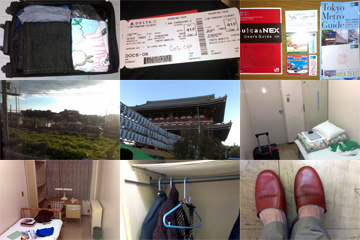 My necessities went into a single medium-sized suitcase [1], and the flight itself was a mere seven hours direct on Delta Airlines [2] (just S$640 two-way - I would have been happy to support our local carrier, but found it hard to do so when the quote came to over twice as much. Next time perhaps) Air travel has gradually gone from being a Big Thing to a glorified train ride, personally, what with all the price-slashing taking much of the old glamour away - they don't even carry complimentary poker cards any longer. I can see standing room coming soon, and then the redundancy of the pilot (in fact, cruising an airplane may be less complicated than a car) Having said that, Delta's banana/yoghurt/muffin snack was well-received, and I was mildly if pleasantly surprised at there being chicken rice and sponge cake after that. Though I had resolved to sleep most of the way, I could not help but be drawn to their Sky Mall magazine, which was chock-full of products I never knew I had always wanted till now. While there are too many examples to list, here are some of the more memorable:
There were a few I wasn't completely sold on, such as an aging accelerator that touts to age wine a decade in seconds, and the sheet holders (since I had done well with safety pins through my army days), but heck, I wouldn't refuse them. Picked up my 2-Day and 1-Day Tokyo Metro Passes after two redirections [3], as well as a Suica & NEX Round Trip combo, which solved my need for a metro farecard for the Toei and JR lines. Passed a bunch of farming communities on the Narita Express to Tokyo proper [4], and noted that homes usually had very similar form, but were rarely exactly identical. For some reason, sloped exteriors and rounded stairs were popular on the larger structures. Being slightly ambitious, I dragged my luggage to the Asakusa Kannon [5] in an effort to witness participants in the Shichi-Go-San festival, but sighted none - was probably too late. I was struck by how commercialised the area around the temple was, though. Exercised my finger-ordering technique for the first time at a Burger King's - anything would do then, really - and then raced to find the Tsukuba Express, boarding the 5:52 p.m. line, with the sky rapidly darkening. Here, the attraction of going it alone should be stated; sure, one misses the company, but then one can push any pace and make any diversions without being concerned about imposing oneself overly on fellow travelers. Twenty stops later, I had how plainly large Tokyo was drummed into me (it's the largest metropolitan area in the world, after all), as I gaped at fifty minutes of unbroken cityscape. The first blast of cold air hit me as I emerged at Tsukuba, as pulling 15kg behind me suddenly seemed less exciting then before. Mercifully, the bus came soon, though I had some trouble with the payment - apparently, the practice was for passengers to board from the middle, and only pay when disembarking from the front, which had a handy slot to convert 1000 Yen notes to a balanced mix of coins. By the way, concerns about coins being hard to come by were completely unfounded - I soon had more than I wanted through normal usage of notes, with no one blinking at breaking 10000 Yen. Dropped off at the Medical Center, and eventually fumbled my way to the Tsukuba Kenshu Center [6] [7] [8] [9], which would be my home for the next six nights. Was handed the key to Room 314, which was spartan, but had a desk and power sockets (whereupon I discovered that my power convertor had a built-in USB connector), but no wi-fi. Oh well. The bathrooms were all situated on the first floor, and thankfully they were spotless. 11 Nov 2012 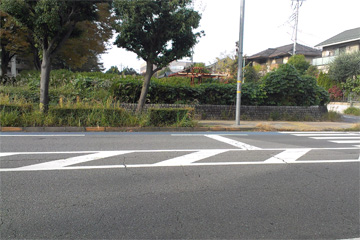 First morning in Japan. I had set my alarm for seven, but managed to wake by myself five minutes before it went off. Breakfast was a large slab of boiled fish, with rice, some sticky beans, and a stick of seaweed. Good enough. Well, time to receive some results. Marched with a guy from Google named Joe to the conference site after we got tired of waiting for the bus, picked up my goodie bag (with programme, neat wooden box, and a 2GB thumbdrive!) and settled into the venue. I'll skip most of the technical details here, but suffice to say my submitted entry (F-measure 0.4908) wound up seventh. Although my latest results (after completing parameter grid-search properly) had an F-measure of 0.5960 (which might have placed fifth, if unfairly since the other participants might well have improved too), it's still clearly no match for the winner, who used a deep convolutional neural network on raw pixel values to achieve an F-measure of 0.7821. [N.B. Yes, that's the same state-of-the-art CNN thing I've been putting aside from character recognition; got to get on it someday. However, the power does come at a cost - using some 66000 mitosis pixels and 2 million negative samples, their CNN takes 1 year to train on a desktop - or 1 week on a GPU, which means that in practice, I'll have to either pick up GPU programming, or commandeer a network to use this technique] The second competition, in the same room, was more well-participated, predictable given how relatively simple it turned out to be. My cross-validation results of some 96%-plus appeared respectable enough, with the around two dozen other contestants declaring accuracies ranging from 91% to 98%, which while made it extremely unlikely that my entry would wind up ahead, was not completely out of the realm of possibility. From what I could sense, not a few of the others were (quite admirably) thinking the same way, and we awaited the results with bated breath... Only to see them all fall below the 73.3% achieved by a human medical doctor and used as a benchmark, all the way down to about 20%, though most got above 40%. My entry did 48%, somewhere in the middle of the pack, with the winner getting just over 69%, good if still nowhere near the cross-validated results claimed by almost everyone. So what happened? Well, the momemt I saw the graph come up, I could not prevent myself from indulging in a wry smile and muttering "Test set may bear little resemblance to training set" under my breath. Recall that the motivation behind cross-validation was to simulate how a model constructed on available training data would perform on unknown test data - but this extrapolates only if the true test set is of approximately the same distribution as the given training set. There is a possible second explanation - that we had all grossly overfit on the given data - but this seemed extremely unlikely given how many independent submissions there were, none of which came anywhere close. And indeed, the organizers revealed that the test data came from completely different slides, with different origins, as compared to the training data. One might still not expect the results to vary so much, given that some entries would have normalized the pixel data, but this could be explained by the test classes shifting wholesale. It is hard to tell without access to the actual images, but the importance of contrast invariance is suggested by the winning team using binary patterns as their base mechanism. Then again, I suppose this only makes the problem more captivating - how does one account for image characteristics varying between labs (though the practical answer, given how quickly a simple SVM can be trained, is probably to simply create a model for each lab, or even machine)? Or, put another way, how to adapt a trained model to a new environment with similar but far from identical structure. Actually, the field - transfer learning - already exists. More things to try (and discuss next time). Hoo-hah. Lunched with an A*STAR PI, who happened to be sitting in on the contests, in between, at a nearby Japanese restaurant. Attempted the seiza for a few minutes before realising that they had evacuated the space under the low table, presumably for the comfort of less cultured guests like myself. Sadly, it rained in the afternoon, which together with the sky being completely dark by five, made getting back to the hostel less than fun. At least it wasn't all that cold, and the umbrella dried quickly (probably due to the low humidity, which was much appreciated by my nose too). The welcome banquet was a nice pick-me-up. 12 Nov 2012 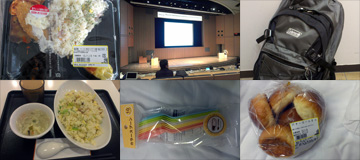 Conference began proper. Breakfast was more or less the same as yesterday. Decided to walk to the conference site, aided by roadside maps, passing by schoolkids already at baseball training. The opening speech [2] was the usual stuff, where I learnt that there were about 25 Singaporean participants (as opposed to over 200 from each of Japan, China and the USA). The prize lectures followed, and frankly what I took from them was how fluent the presenters were (then again, I assume they had plenty of practice at lecturing) I'll be honest, I had not heard too much about sparse coding and dictionaries before this lecture, but from the description shown it reminded me a lot about PCA (recall eigenfaces and all that), and as it turns out, it indeed seems to be a more generalized form of PCA. The next lecture could then be seen as largely on the same topic, with more video and an extension to sparse subspace clustering. It was then time for the Kanade (of Lucas-Kanade fame), though his presentation was much heavier on demonstrating various projects with practical applications. Noted especially the slightly bulky wearable pupil tracker, even if the Big G's (and maybe M) probably going to better it. Additionally, the presenters tried a joke or two, but generally the audience either didn't quite catch them, or were too polite to laugh. Would probably have gone over better in the West. Lunch was a bento box [1] (only 298 Yen, disposable spoons [5] purchased separately, with five buns [6] for the night) from Dayz Town supermarket, and since I had gotten tabs on the water cooler on the first floor, I was all set indefinitely. On the dress code, I had arrived in a tie, but discovered that while it was by no means unknown, it was clearly optional, and was soon glad to be rid of the neck constriction. The local workers tended towards being immaculately dressed, though, whether they were driving buses, or sweeping leaves off the road. It's a different economic structure than back home. In general, the Westerners were decidedly more casually dressed, with some form of polo shirt with jeans commonplace. The elder professors tended to fall into two extremes - they were either dressed up to the nines, with bowties and rosettes, or so normally that they might as well have been on vacation (which, in a way, we were) Bicycles were also prevalent, and with Tsukuba on the whole a pretty new city, bicycle lanes were everywhere too (though, again, not often kept to) Sat through more image fusion and denoising stuff, and noted that the side halls were a wee bit less filled, particularly as the day wound on. Time passed surprisingly quickly as I went about absorbing some of what they said. Dropped by Loft to purchase a new backpack [3] (as I did back in Europe - please remind me never to rely on that small thing in the future), confirming that my credit card, commissioned mostly for the occasion, was in working condition. Got dinner [4] at the basement food center (a lot like Singapore, then), and entertained myself with 3D Space Pinball and Hearts on the netbook back at the hostel. 13 Nov 2012 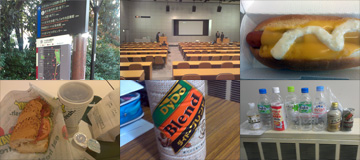 Walked the right way this time [1], passing by the museums, and enjoyed the different styles of talks [2]. Had my first international collaboration when I tried to get to the upper level of the main hall, only to discover that the doors on one side were locked. A simple mutual crossed-hand signal with a Caucasian who had the same idea at the other end saved additional effort on both our parts. Enjoyed more lecturing styles in the morning, then snagged a tasty G-dog cheese hotdog sandwich [3] at a convenience store for lunch, then sat through an interesting session by the coauthor of OpenTLD. Most memorably, he described his participation in Robot Wars, a 2008 competition to procure solutions for military needs [N.B. DSTA has had a TechX Challenge too, but the results were... not optimal] They went to great lengths in training their system, obtaining replica weapons and camoflague uniforms to take photos of, and settled on quadcopters as their platform since they wanted to be able to peer on roofs, and hover in place (saying that, drones haven't been doing too bad in the Middle East, depending on one's side). In early tests, they had a student walking the copter on a leash, just in case, which was a hoot. As was inevitable, the big day came... and the landscape was drenched by rain and swept by gale-force winds, grounding their fleet while other competitors' more-stolid minature dirt buggies trundled happily along. The best-laid plans... Got back to my room early to prepare my spiel for the morrow after a Subway dinner [4], with special emphasis on getting the timing right - knowing myself, it is not that simple to cover every detail in the allotted time, with drifting off on tangents all too easy. This called for plenty of canned coffee [5] [6] while I tried to ignore the wobbly door, which vibrated at the slightest movement outside, and completed my task only at about three in the morning. 14 Nov 2012 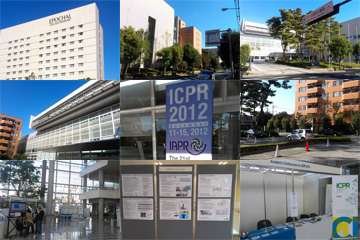 The big moment for me. I slipped on my blazer, since it was purchased especially for this, even if it was discounted, and the (invited) speaker before me helped to calm nerves with a couple of Monty Python skits. I then did my best oral examination impression through the next sixteen minutes, ended about on the dot (so my rehearsal was spot on) Thinking back, I probably could have answered the ensuing questions in more detail, but then again there were only three minutes. One of them basically related to how transferable the process is to a range of circumstances - hmm, transfer... Well, job done, it was bye bye blazer and tie, which went straight into my backpack. Not feeling too hungry, I passed up lunch in favour of the various snacks offered - the cakes and bagels were excellent - in preparation for the conference banquet dinner later. Took some photos about the site [1-9] and picked up a free back copy of IEICE Transactions on Communications, which served to remind of how wide the scope of computer science truly is. Sat through more poster shotguns - they gave each presenter 30 seconds, which as it turned out was generally insufficient to explain the idea, but a pain to wait in the case of absentees. Speaking of absentees, one voice recording got chewed out for not being present in person, which could have been avoided by just getting his friend to read out a script, instead of being limited to setting up the computer. The banquet was held at a hotel some ten minutes' walk away, made slightly less pleasant by windchill - luckily, I had my blazer this time. The hall was kind of overpopulated, though it turned out there was a second one, and after a couple of limericks by the hosts, the food arrived to drumming by a local troupe (all projected on screen). Nothing to be done but to stuff myself, and to my slight surprise nobody had much trouble with chopsticks. 15 Nov 2012 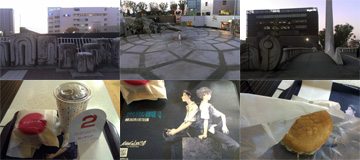 Not too much to be said about this final day, except that I shuttled between more venues than usual, and ended my technical notes at 127 pages (some sparsely filled, most taking some making sense of) of the 400-page notebook I got specially for the conference, which would no longer close flat. Will probably take some editing to be of use. The last session ended at about 4 p.m., but dusk had fallen, and nearly all the attractions (mostly science-based) were closed. Explored a little [1-3] and ate at Lotteria [4-6], which despite its name had no English menu, so the ol' finger did its job again. There were some innovations, such as the wax paper wrapper for the burger having a pocket, and the fries container being low-cut for convenient access - features that larger chains could do well to adopt. Got back to my room by six and improved at Hearts. Also got confirmation by email that I would be a co-author with some of the biggest names in the (sub-)field, thanks to the initiative of my supervisors. Granted, being a survey-type paper, it doesn't mean much at all, but it's still great encouragement to be on the same page as leading researchers whose papers one has read so often. A fine way to begin the second part of the trip... [To be continued] Next: Tokyo Drifting
|
|||||||
 Copyright © 2006-2025 GLYS. All Rights Reserved. |
|||||||